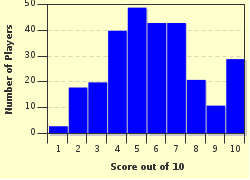Quiz Answer Key and Fun Facts
1. A right-wing revolt in Spain in 1936 results in the Spanish Civil War. The left-wing government expected help from which country, which, however, preferred a policy of strict neutrality?
2. The capital of which country was renamed Ciudad Trujillo after the ruling dictator?
3. At the 1936 Winter Olympics, the most successful nation was Norway, winning 7 out of 17 gold medals, 3 of them by speedskater Ivan Ballangrud. In which country and city were these games held?
4. In 1936, airships (also known as zeppelins) were still rivaling airplanes for supremacy as the means of fast long distance travel. In fact, the largest flying machine ever was an airship built in 1936, the LZ129. In what country was the LZ129 built?
5. The Dardanelles had been demilitarized until 1936, but the country possessing them wanted to change that. After an international conference, it was granted this right. Which country owned the Dardanelles in 1936?
6. The head of state of which country had to flee his country in 1936?
7. Marrying the person you love isn't always easy. The king of which country had to choose between his girlfriend and his country, and chose the former, thus being forced to abdicate?
8. In 1936, the Soviet Union signed a defensive pact with another country, promising to defend it if it was being attacked. Which country did it promise to defend, and from which country did that country need protection?
9. Syria was a 'mandate area' of the League of Nations. This means that another country protected the country, decided its foreign policy and supported it economically - not very unlike a colony, really. However, in 1936 the two countries made an agreement to diminish the other power's military presence in Syria, strengthen the Syrian state and have the mandate status end in three years' time. After that, Syria is supposed to join the League of Nations. Which country had the mandate over Syria in 1936?
10. The Anti-Comintern pact, being directed against international Communism, and in particular against the Soviet Union, was signed in 1936 between Germany and which other country?
Source: Author
engels
This quiz was reviewed by FunTrivia editor
bloomsby before going online.
Any errors found in FunTrivia content are routinely corrected through our feedback system.


